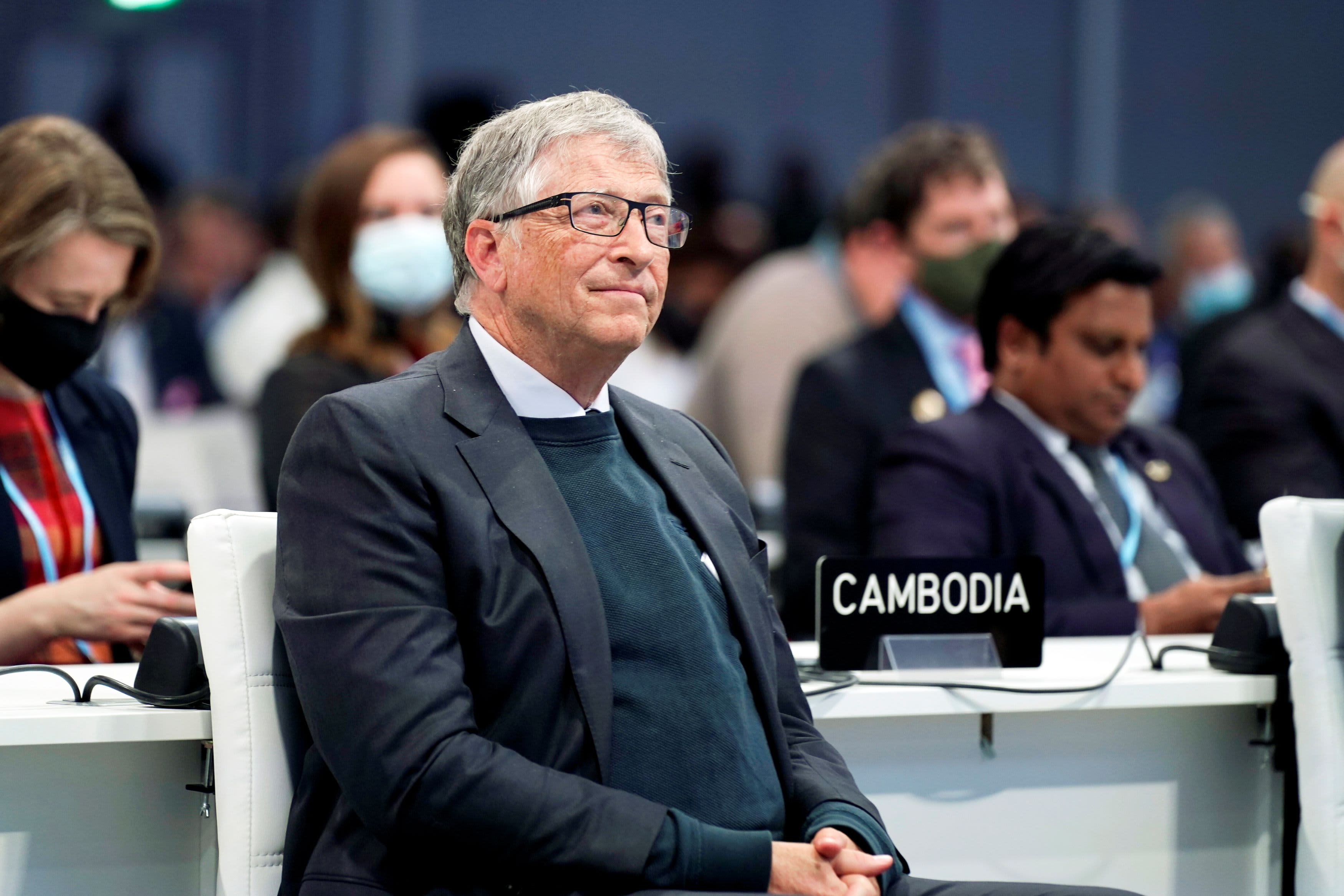It’s a common refrain: A billionaire loudly promotes potential solutions for climate change while jetting around the world, leaving a sizable carbon footprint.
This week, it happened twice. First, Microsoft co-founder Bill Gates — an outspoken advocate for combatting climate change — reportedly celebrated his 66th birthday by hosting dozens of guests, including fellow billionaire Jeff Bezos, on a mega-yacht in the Mediterranean Sea near Turkey’s coast.
Some of the guests were reportedly flown to the yacht on helicopters, according to Turkish newspaper Daily Sabah. Just days later, Bezos faced similar backlash for flying his private jet to the COP26 climate summit in Scotland — a particular sort of irony.
Ultra-wealthy people often argue that their high profiles and busy schedules require them to travel via private planes, helicopters or yachts. In his 2021 book “How to Avoid a Climate Disaster,” Gates writes that he counteracts his non-aviation emissions by “buying offsets through a company that runs a facility that removes carbon dioxide from the air.”
On Tuesday, a spokesperson for Bezos’ $10 billion Bezos Earth Fund told The Independent that the Amazon founder also “offsets all carbon emissions from his flights.”
Carbon offsets aren’t just a tool for billionaires — anyone can purchase them. Here’s what they are, and whether or not they can actually help fight climate change:
What are carbon offsets?
In theory, carbon offsets help balance your carbon footprint by funding environmental projects that reduce greenhouse gases in the atmosphere. One carbon offset credit supposedly equals one metric ton of carbon dioxide, or a comparable amount of other greenhouse gases, removed from the air.
Corporations or governments might buy them to justify manufacturing products in a factory. Individuals often use them to offset the carbon burned from driving cars or getting on flights.
You can buy credits from companies and programs that plant trees or fund renewable energy projects, or even from farmers who reduce or capture methane emissions from livestock.
Gates spends roughly $5 million per year to offset his family’s carbon footprint, he wrote on his Gates Notes blog in February.
While Gates didn’t specify exactly where that money goes, he’s invested in multiple companies that offer offsets. One, a Canadian start-up called Carbon Engineering, uses a process called “direct air capture” to suck carbon dioxide from the air and store it safely. Another, an Icelandic company called Carbfix, captures carbon dioxide from power plants and stores it in volcanic rocks.
Do carbon offsets work?
There’s no simple “yes” or “no” answer, but some experts have expressed deep skepticism over carbon offsets in recent years — specifically regarding their effectiveness and reliability.
In 2019, a ProPublica report discovered multiple examples of programs that sold carbon offset credits for carbon reduction work that never ended up happening.
California is attempting to offset its carbon emissions by investing heavily in its forests, as part of its effort to reach carbon neutrality by 2045. But an April study by San Francisco-based nonprofit CarbonPlan found that the state significantly overestimated the climate value of its efforts, and that its offsets “do not reflect real climate benefits.”
Last month, environmental group Greenpeace called for an end to carbon offsets, echoing skeptics who worry that carbon offsets are diverting funding from long-term climate solutions. Other critics claim that carbon offsets are mostly a convenient way for corporations and billionaires to justify their pollution, rather than reducing their emissions.
Despite that, the offsets only seem to be getting more popular, especially as organizations and governments commit to massively reducing their emissions. Global spending on carbon offsets could increase from roughly $300 million in 2018 to as much as $100 billion by 2030, according to the Institute for International Finance’s Taskforce on Scaling Voluntary Carbon Markets.
One popular rationale: Buying carbon offsets is better than doing nothing at all. While many people and companies certainly can — and should — make strides to reduce their carbon footprint, the argument goes, you may not be able to completely cut carbon emissions to zero.
That seems to be Gates’ strategy — reduce your emissions when you can, and buy carbon offsets to help justify when you can’t. Maybe, he wrote in a February blog post, buy a little extra just to be sure.
“Since the way we calculate carbon footprints is still in its infancy, I take our family’s carbon footprint and double it to make sure we are fully covering our footprint and then some,” Gates wrote.
Sign up now: Get smarter about your money and career with our weekly newsletter
Don’t miss:
Carbon capture technology has been around for decades — here’s why it hasn’t taken off
